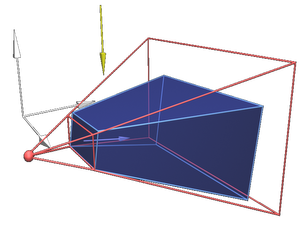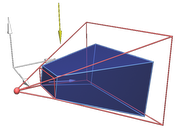Information
- Publication Type: WorkshopTalk
- Workgroup(s)/Project(s): not specified
- Date: 17. December 2009
- Event: SIGGRAPH Asia Course
- Lecturer: Daniel Scherzer
- Location: Yokohama, Japan
- Keywords: shadows, real-time
Abstract
Shadows are crucial for enhancing realism, and they provide important visual cues. In recent years, many important contributions have been made in representation of both hard shadows and soft shadows. With the tremendous increase of computational power and capabilities of graphics hardware, high-quality real-time shadows are now a reachable goal. But with the growing volume of available choices, it is particularly difficult to pick the right solution and assess product shortcomings. Because currently there is no ideal approach available, algorithms should be selected in accordance with the context in which shadows are produced. The possibilities range across a wide spectrum, from very approximate but really efficient to slower but accurate, adapted only to smaller or only to larger sources, addressing directional lights or positional lights, or involving GPU or CPU-heavy computations. This course is a guide to better understanding of the limitations and failure cases, advantages and disadvantages, and suitability of the algorithms for different application scenarios. It focuses on real-time, interactive solutions but also discusses offline approaches.Additional Files and Images
Weblinks
No further information available.BibTeX
@WorkshopTalk{scherzer2009c,
title = "Casting Shadows in Real Time",
author = "Michael Schwarz and Elmar Eisemann and Ulf Assarsson and
Daniel Scherzer",
year = "2009",
abstract = "Shadows are crucial for enhancing realism, and they provide
important visual cues. In recent years, many important
contributions have been made in representation of both hard
shadows and soft shadows. With the tremendous increase of
computational power and capabilities of graphics hardware,
high-quality real-time shadows are now a reachable goal. But
with the growing volume of available choices, it is
particularly difficult to pick the right solution and assess
product shortcomings. Because currently there is no ideal
approach available, algorithms should be selected in
accordance with the context in which shadows are produced.
The possibilities range across a wide spectrum, from very
approximate but really efficient to slower but accurate,
adapted only to smaller or only to larger sources,
addressing directional lights or positional lights, or
involving GPU or CPU-heavy computations. This course is a
guide to better understanding of the limitations and failure
cases, advantages and disadvantages, and suitability of the
algorithms for different application scenarios. It focuses
on real-time, interactive solutions but also discusses
offline approaches.",
month = dec,
event = "SIGGRAPH Asia Course",
location = "Yokohama, Japan",
keywords = "shadows, real-time",
URL = "https://www.cg.tuwien.ac.at/research/publications/2009/scherzer2009c/",
}


